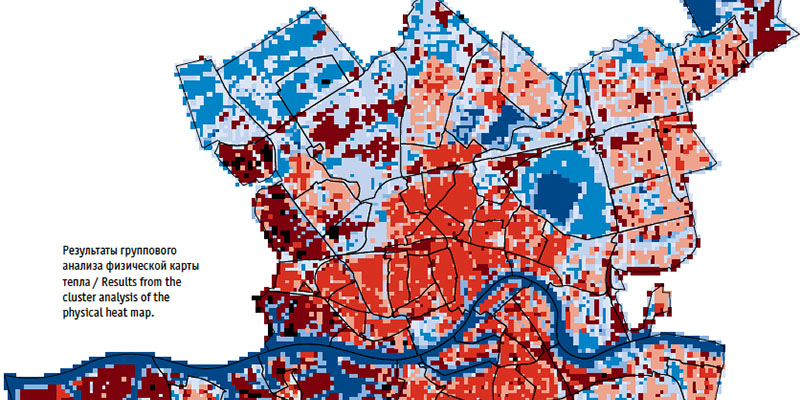Downloads
DOI:
https://doi.org/10.7480/projectbaikal.45.906Keywords:
urban heat island, ground heat flux, urban design, spatial planning, built environment, climate adaptation, RotterdamAbstract
The urban heat island is considered to be one of the contemporary health aspects that cities urgently need to respond to. The Hotterdam research project addresses the Rotterdam urban heat island, in order to explain the links between the health of the city’s population and the features of its built environment that make it more or rather less warm. The work resulted in two heat maps that make the city of Rotterdam and its inhabitants more aware of and less susceptible to the health effects of heat waves. The insights into the urban heat island that were gained in this project are relevant for other cities in Holland (Amsterdam, The Hague) and abroad.
How to Cite
Published
Issue
Section
References
Daniele, V. (2010). Urban planning and design for local climate mitigation. A methodology based on remote sensing and GIS. Paper presented at the 46th ISOCARP Congress 2010, Nairobi, Kenya. Retrieved from http://www.isocarp.net/Data/case_studies/1815.pdf
Barriopedro, D., Fischer, E. M., Luterbacher, J., Trigo, R. M., & García-Herrera, R. (2011). The hot summer of 2010: redrawing the temperature record map of Europe. Science, 332(6026), 220–224. doi:10.1126/science.1201224
Dhainaut, J.-F., Claessens, Y.-E., Ginsburg, C., & Riou, B. (2004). Unprecedented heat-related deaths during the 2003 heat wave in Paris: consequences on emergency departments. Critical Care, 8(1), 1–2. doi:10.1186/cc2404
Dousset, B., Gourmelon, F., Laaidi, K., Zeghnoun, A., Giraudet, E., Bretin, P., Maurid, E. &Vandentorren, S. (2011).Satellite monitoring of summer heat waves in the Paris metropolitan area.International Journal of Climatology, 31(2), 313-323.doi:10.1002/joc.2222
Greater London Authority. (2006). London’s Urban Heat Island: A Summary for Decision Makers. Retrieved from http://legacy.london.gov.uk/mayor/environment/climate-change/docs/UHI_summary_report.pdf
Harman, I. N. (2003). The energy balance of urban areas. (Doctoral dissertation, The University of Reading, Reading, United Kingdom). Retrieved from http://www.met.rdg.ac.uk/phdtheses/The%20energy%20balance%20of%20urban%20areas.pdf
Mavrogianni A., Davies M., Batty M., Belcher S.E., Bohnenstengel S.I., Carruthers D., Chalabi Z., … Ye Z. (2011). The comfort, energy and health implications of London’s urban heat island. Building Services Engineering Research and Technology, 32 (1) , pp. 35–52. doi: 10.1177/0143624410394530
Rydin, Y., Bleahu, A., Davies, M., Dávila, J. D., Friel, S., De Grandis, G., … & Wilson, J. (2012). Shaping cities for health: complexity and the planning of urban environments in the 21st century. The Lancet, 379(9831), 2079–2108
van der Hoeven, F., & Wandl, A. (2015a). Amsterwarm: Mapping the landuse, health and energy-efficiency implications of the Amsterdam urban heat island. Building Services Engineering Research and Technology, 36(1), 67–88. doi:10.1177/0143624414541451
van der Hoeven, F., & Wandl, A. (2015b). Rotterdam. Hoe ruimte Rotterdam warmer maakt, hoe dat van invloed is op de gezondheid van de inwoners, en wat er aan te doen is. Delft, Nederland: TU Delft Bouwkunde. doi:10.7480//bkbooks/hotterdam/nl
van der Hoeven, F., & Wandl, A. (2015c). Rotterdam. How space is making Rotterdam warmer, how this affects the health of its inhabitants, and what can be done about it. Delft, Nederland: TU Delft Architecture and the Built Environment. doi:10.7480/bkbooks/hotterdam/en
Vandentorren, S., Bretin, P. , Zeghnoun, A., Mandereau-Bruno, L., Croisier, A., Cochet, C., … Ledrans, M. (2006). August 2003 Heat Wave in France: Risk Factors for Death of Elderly People Living at Home. European Journal of Public Health, 16(6), 583–591. doi:10.1093/eurpub/ckl063



